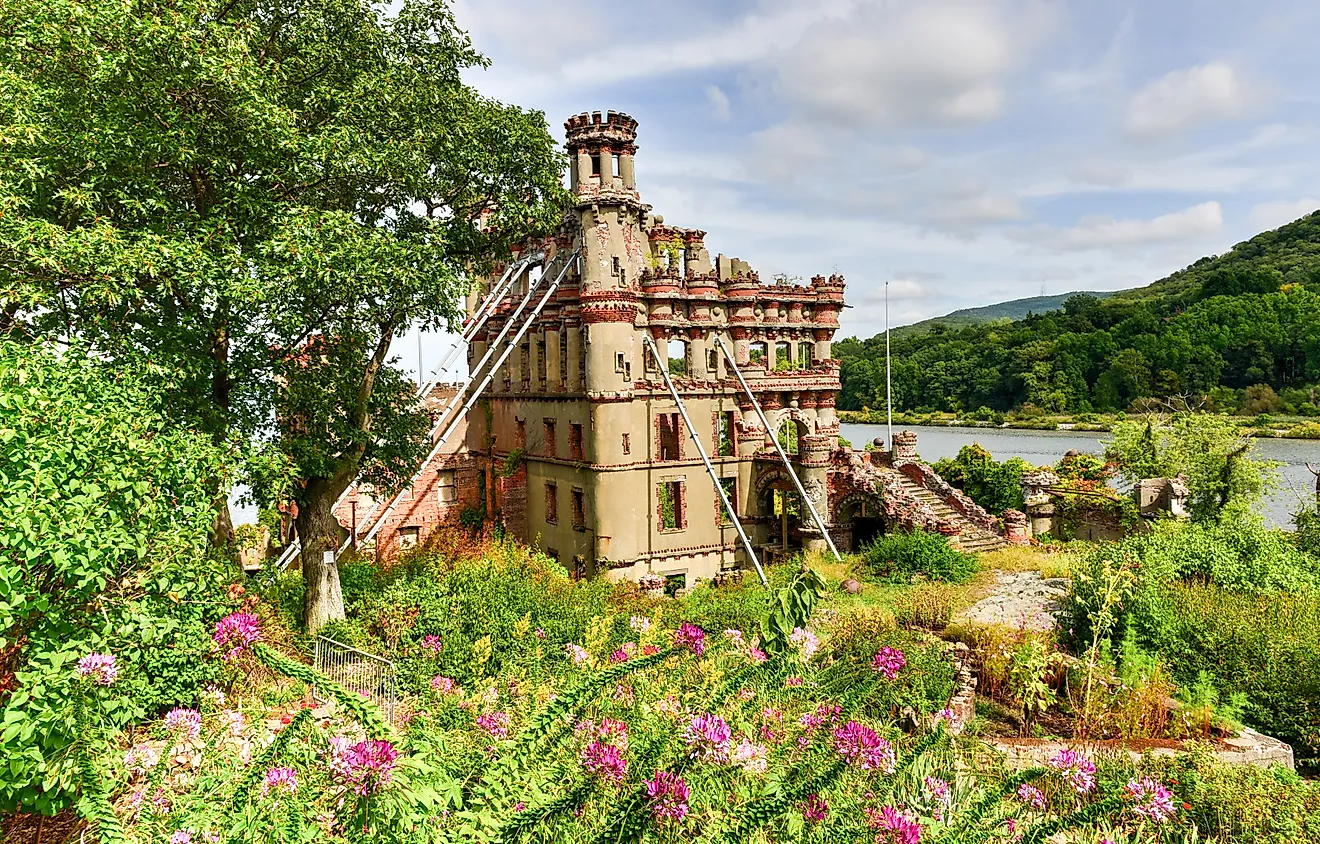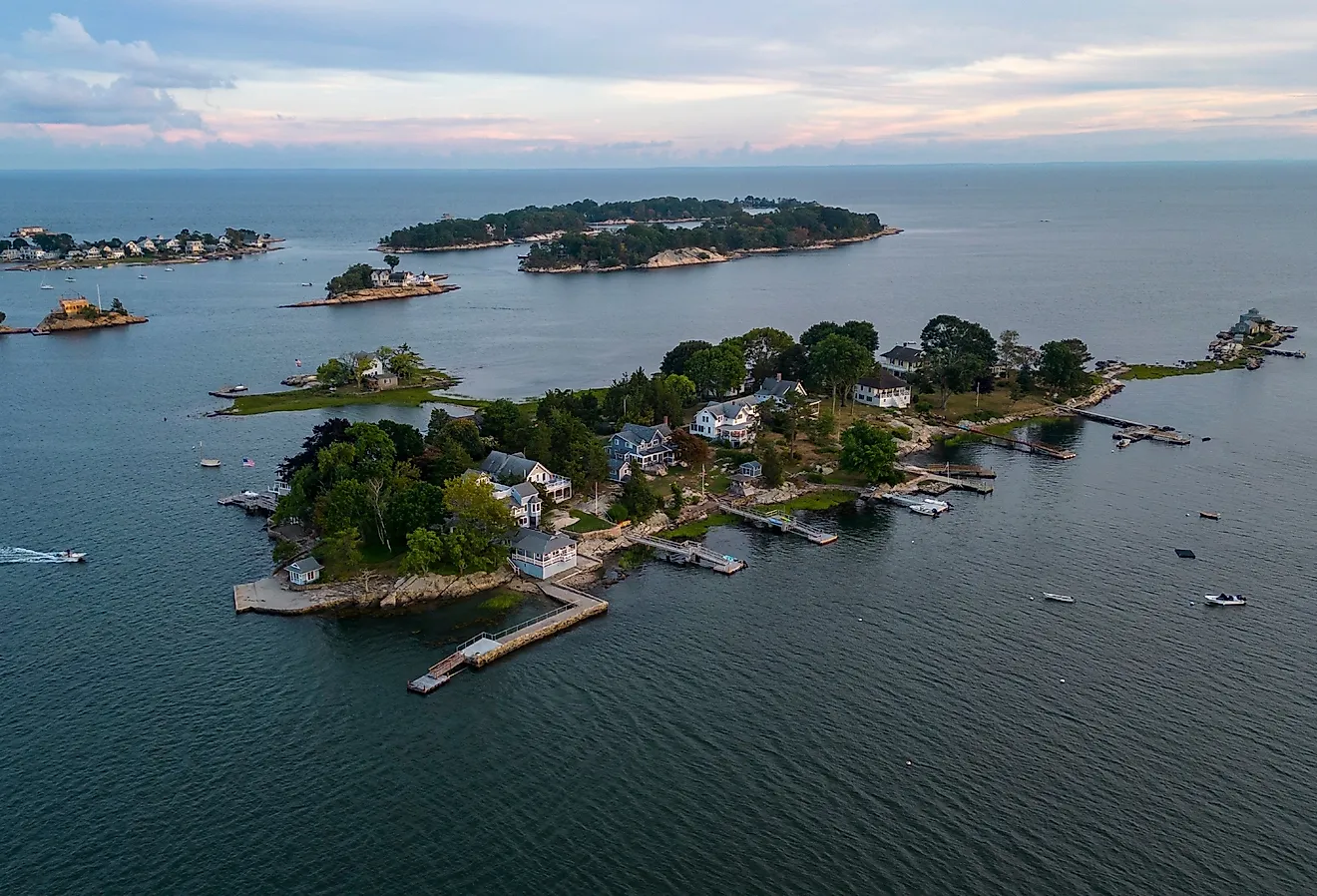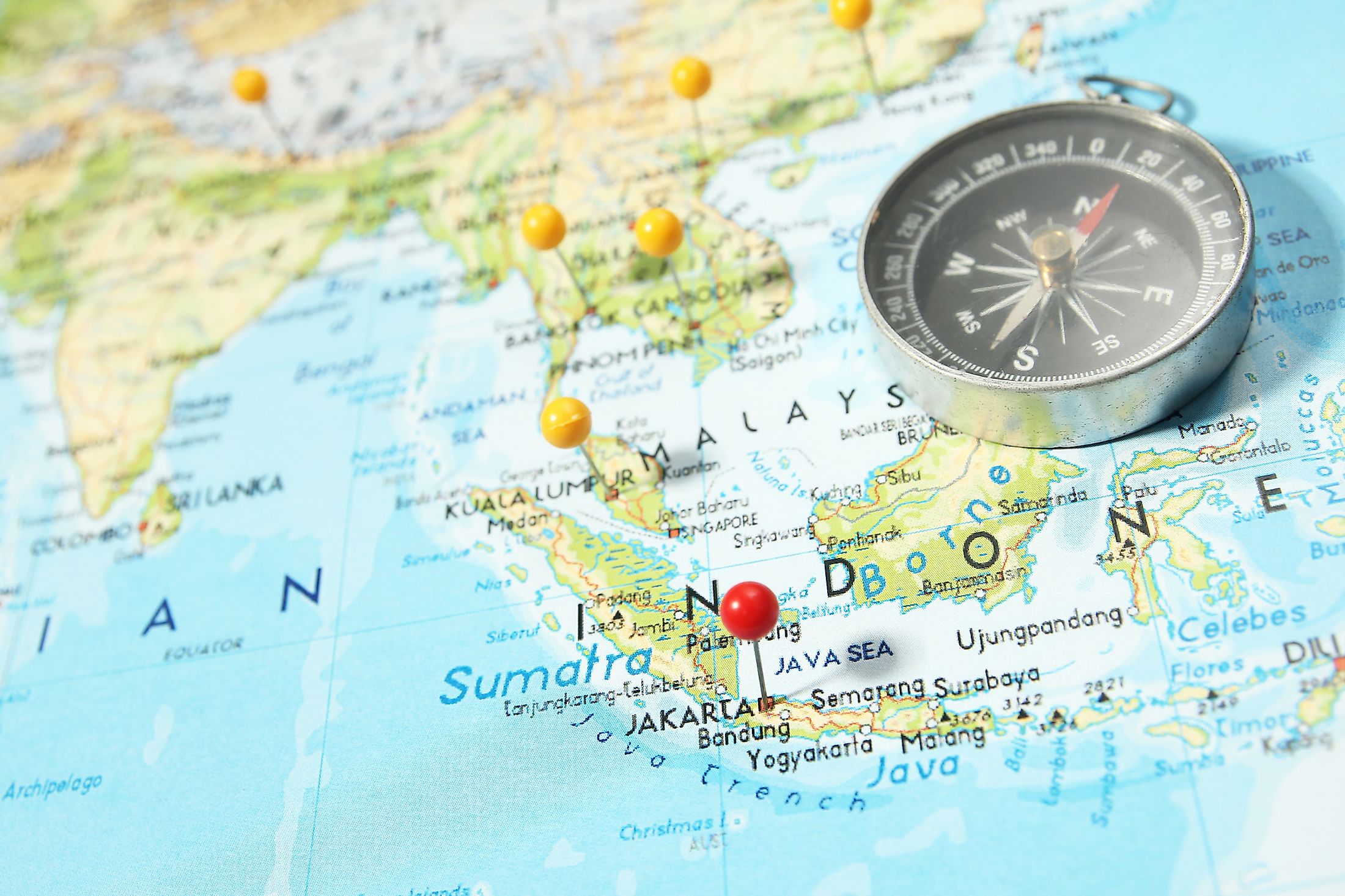
Java Island
Java is a very densely-populated island in the country of Indonesia. It is the fourth-largest island in the Indonesian archipelago, and the 12th largest island in the world. The island of Java is home to more people than any other island on Earth. Its population is diverse, multilingual, and increasingly urbanized. Though the origins of Java’s name are unknown, its significance in the region is no secret. Java has traditionally been the center of power in Indonesia, from pre-colonial times all the way to the present. Today, it is also at the heart of the Indonesian economy, producing everything from oil to automobiles.
Where Is Java?
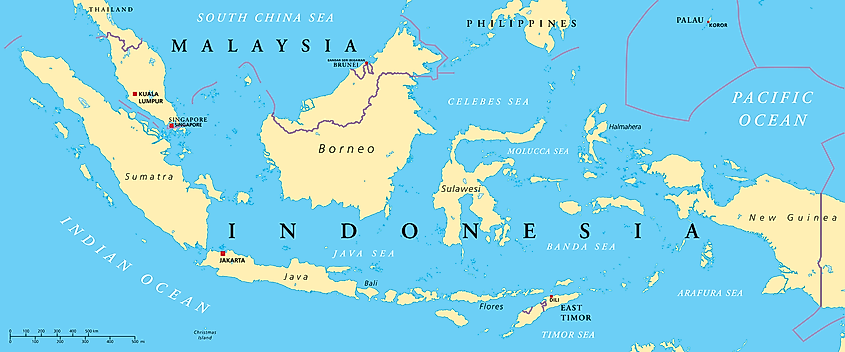
The island of Java is located in Southeast Asia, in the southwestern part of the Indonesian archipelago. To the north of the island is the Java Sea, across which the island of Borneo is found. To the south is part of the Indian Ocean. Christmas Island, which belongs to Australia, can be found to Java’s southwest. To Java’s northwest, across the Sunda Strait, is the island of Sumatra. Two smaller islands, Madura and Bali, nearly touch the island of Java. Madura is located off Java’s northeast coast, while Bali is situated immediately to the east.
Geography
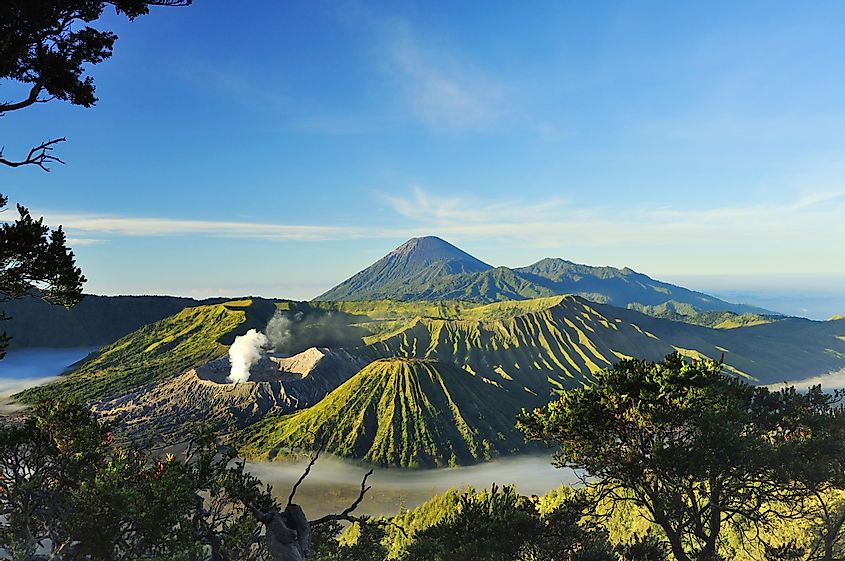
Java has a total land area of 138,794 sq. km. The island is 1,064 km long, east to west, but just 100 to 160 km wide. Java is the smallest of the Greater Sunda Islands, a chain of islands that also includes Borneo, Sumatra, and Sulawesi. The island is mostly volcanic in origin. It has at least 112 volcanoes, of which 45 are active. Java is part of the so-called Ring of Fire that surrounds the Pacific Ocean, and is characterized by heavy seismic activity.
The mountains of southern Java form a strip that runs from the east to the west of the island. The highest mountain on the island of Java is the volcano known as Mt. Semeru, which reaches a height of 3,676 meters. Adjacent to the mountains of Java are limestone ridges and lowlands. The lowlands feature Java’s most fertile plains. Towards the shores of the island are mangrove swamps and spacious harbors. Since the north shore is the flattest part of Java, most of the island’s population centers, including Jakarta, the capital of Indonesia, are situated there.
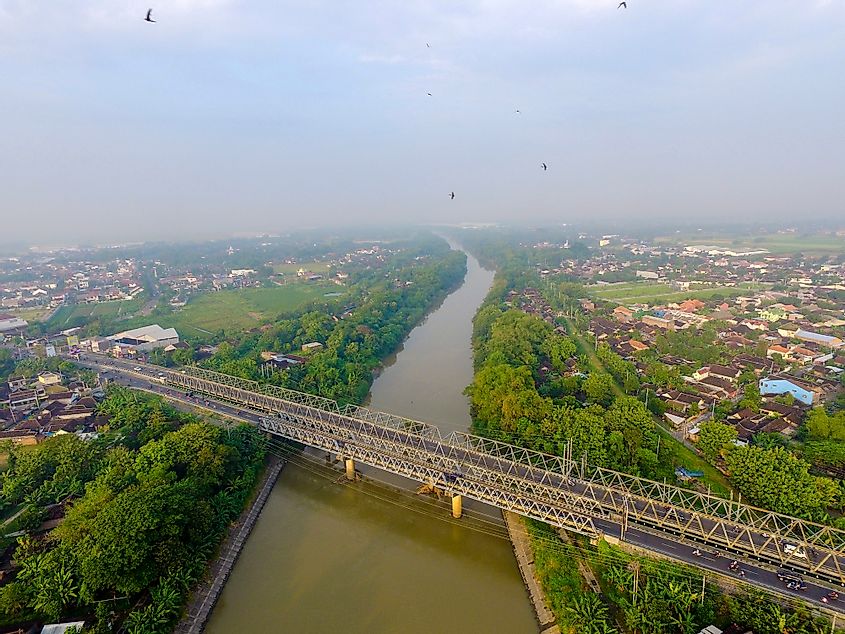
The longest river on the island of Java is the Bengawan Solo River. The Bengawan Solo, which translates as “captive” or “big river” is approximately 548.33 km long and flows through two of the island’s provinces, Central Java and East Java. The river system of Java is vital to the island’s economy, as it is used as an irrigation system for the more than two thirds of the island that is under cultivation.

The entire island of Java belongs to Indonesia, and is divided into several subnational jurisdictions. There are four provinces, called Bantan, Jawa Barat (West Java), Jawa Tengah (Central Java), and Jawa Timur (East Java). There are also two special districts, one of which is known as Greater Jakarta, which encompasses the aforementioned capital city of Jakarta. The other, Yogyakarta, comprises the territory in which the city of the same name is situated, and is located on Java’s southern coast.
Demographics
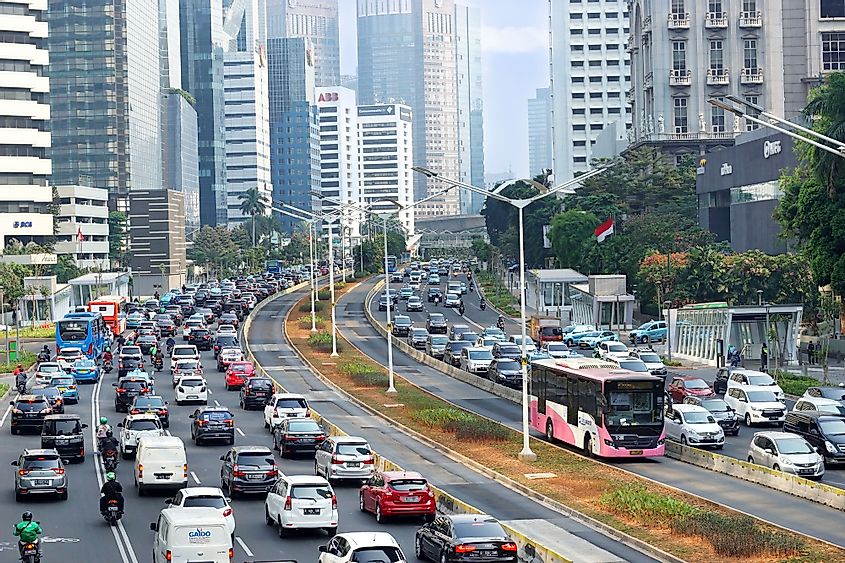
Java is the most populous island in all of Indonesia. Whereas the island makes up just 7% of Indonesia’s total landmass, it is home to roughly 56.7% of the country’s total population. More than 145 million people live in Java (2015 est.), making the island one of the most densely populated places on Earth, at 2,070 people per sq. km. In fact, Java’s population makes it the most populous island in the entire world. Not surprisingly, Java is home to Indonesia’s biggest cities. Jakarta, the capital, has a population of more than 10 million, making it the country’s most populous city. The second and third largest cities, Surabaya and Bandung respectively, are also located in Java. In fact, out of Indonesia’s ten largest cities, eight of them are situated on the island of Java.
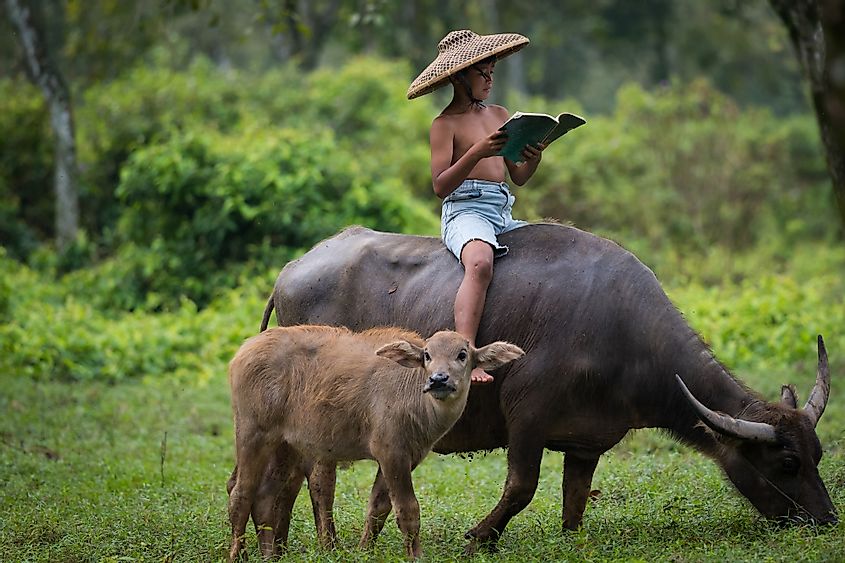
Several ethnic groups live in Java. Among them are the people named for the island, the Javanese, who make up 40% of the entire Indonesian population. On the western side of the island are the Sundanese, named for the Sunda Islands of southwestern Indonesia, which include Java. In eastern Java are large populations of Balinese and Madurese people, who are native to the neighboring islands of Bali and Madura. Smaller ethnic groups on the island of Java include the Osing and Tengger of eastern Java, and the Cirebon, Baduy, Betawi, and Banten on the western side of the island.
Java, not to mention the entirety of Indonesia, is as diverse linguistically as it is ethnically. More than 30% of the entire country’s population speaks Javanese, which is of course the language of the people of the same name. Many residents of the western end of Java speak Sundanese. The official language, Bahasa Indonesia, which is a standardized form of Malay, is spoken by 94% of the Indonesian population, though it is only the primary language of 20% of Indonesians. Bahasa Indonesia is the most spoken language in the capital Jakarta.
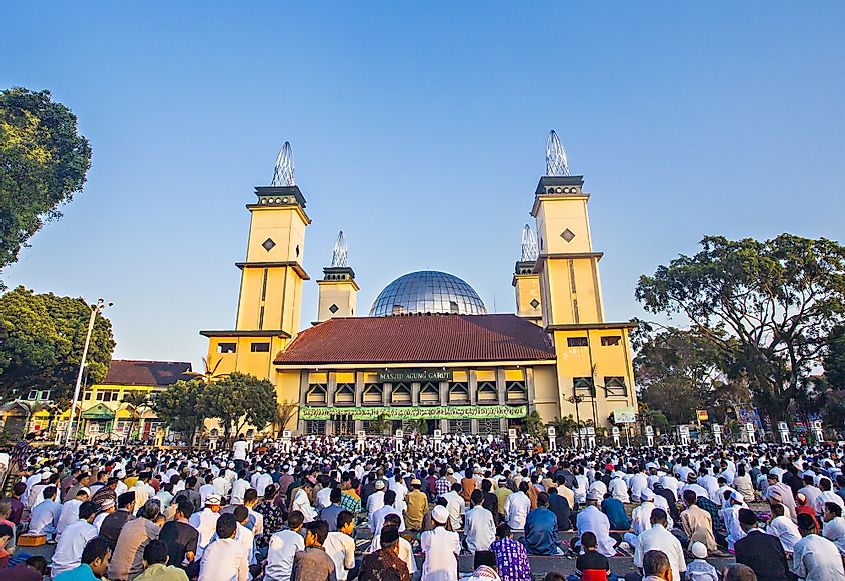
In terms of religion, the overwhelming majority of the people of Java practice Islam, as do most of the Indonesians in general. Sunni Islam is both the predominant sect of Java and Indonesia as a whole. The ethnic Javanese Muslims are traditionally divided into two groups: one is known as the Abangan, while the other is called Santri. The Abangan form of Javanese Islam blends the religion with elements of Hinduism, Buddhism, and animist traditions. Practitioners of this particular form of Islam tend to live in rural settings. In contrast, Santri Islam is a more orthodox form of Islam, focused on the Quran and the mosque. Most of its adherents are urbanites.
A Brief History Of Java
Modern human occupation of Java dates back to 2500 BCE, when agriculture was first practiced on the island. The earliest kingdom to be established in Java was the Kingdom of Mataram, in the eighth century CE. This was a Hindu kingdom, though its kings later accepted Mahayana Buddhism. It was in the 8th and 9th centuries in which Buddhism had a strong influence in Java. Afterwards, however, Hinduism began making inroads on the island, especially during the era of the Srivijayan Empire, which was a golden age of culture and literature, when the Hindu epics were translated from Sanskrit to Javanese.
The first kingdom to unite the entire island of Java was the kingdom of Singhasari. One of its kings, Kertanagara, who ruled from 1268 to 1292, not only managed to unite the entire island, but also extended his control over parts of Borneo, Bali, and other eastern islands. By the late 13th century, the Majapahit Empire had succeeded Singharasi. It was based in eastern Java, and controlled most of the Indonesia archipelago.
By the 16th century, Muslim kingdoms based on Java’s coasts had begun their rise on the island. The first major Muslim kingdom on the island was known as Demak, which emerged in the last quarter of the 15th century, and reached the height of its power by the year 1540. Founded on the north-central coast of Java, this kingdom controlled much of Java’s northeastern coast, and its Islamic influence spread as far as western Java. It was also in the 16th century that Europeans began visiting the Indonesian archipelago. The Portuguese were the first to arrive in 1512, followed by the Spaniards.
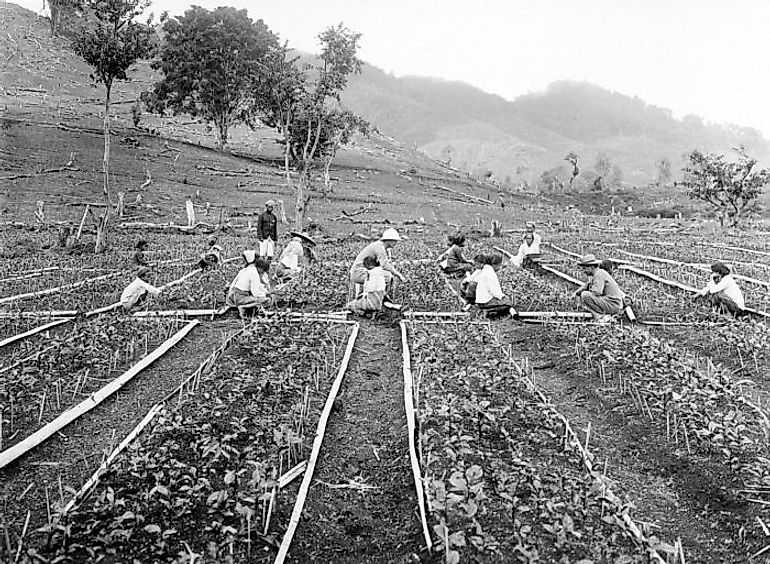
Tea plantation in Java during Dutch colonial period, in or before 1926. Image credit: CaptionTropenmuseum, part of the National Museum of World Cultures, via Wikimedia Commons
The Dutch first arrived in the Indonesian archipelago in 1596, and established their first permanent trade post in the area in 1603. The center of Dutch colonial administration was set up in what is now Jakarta in 1611. By the 19th century, Indonesia formally became a colony of the Netherlands, after the Dutch government took over administration of the territory from the Dutch East India Company. The Dutch would rule Indonesia, including Java, as the Dutch East Indies until after World War II, when the local population resisted Dutch efforts to take back control of the archipelago after the Japanese invasion and occupation of the region had ended. Indonesia declared independence in 1945, though its fight against the Dutch would continue until 1949, when all of the former Dutch East Indies was brought under its control. Jakarta was made Indonesia’s capital, and most of the country’s political figures have been of Javanese origin. All but one of Indonesia’s presidents, for example, have come from Java. Today, the island remains the center of political and economic life in the country.
Economy And Natural Resources
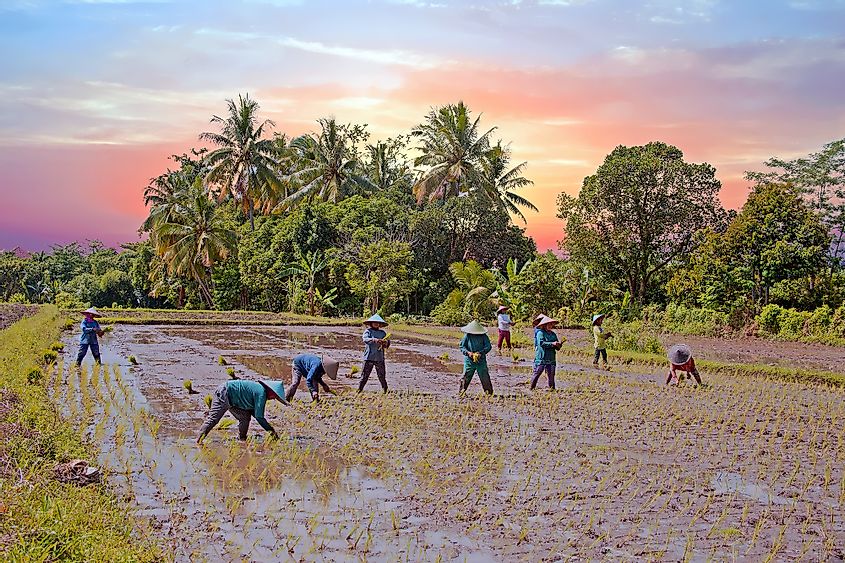
Much of Indonesia’s wealth is concentrated in Java. The island’s urban areas are among the country’s wealthiest and most developed. Java’s economy is quite diversified, and includes sizeable agricultural, mining, manufacturing, and oil and gas sectors. As previously mentioned, more than two thirds of the island is under cultivation.
Important crops include sugar cane, kapok, rubber, tea, coffee, tobacco, cacao, cinchona (the source of quinine), corn, maize, cassava, peanuts, soybeans, sweet potatoes, and rice. Oil fields can be found off Java’s northwest coast, and the island is also home to refineries.
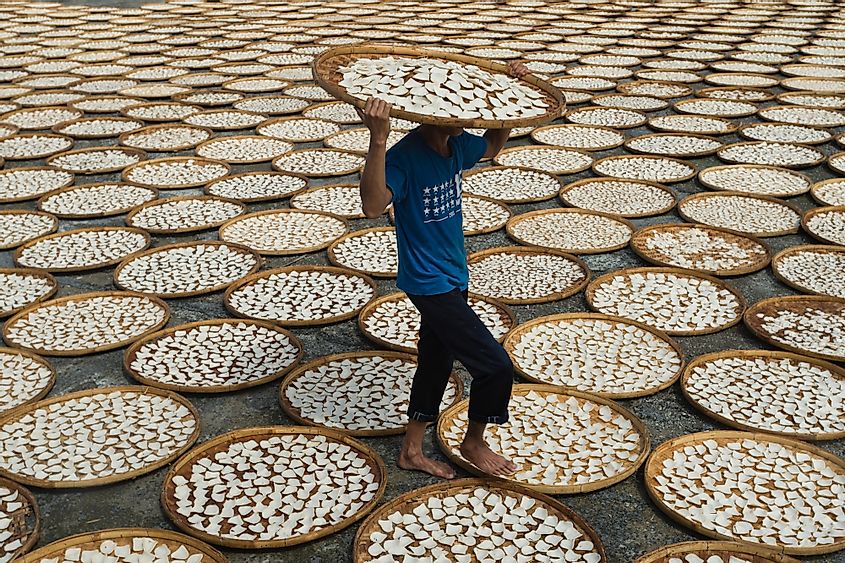
Some mining takes place on the island, including the extraction of tin, gold, silver, copper, coal, manganese, phosphate, and sulfur. Java hosts the bulk of Indonesia’s manufacturing sector, with industry mainly centered in the cities of Jakarta and Surabaya. Large industries include rubber manufacturing, automobiles, textiles, brewing, and the production of shoes, paper, soap, cement, and cigarettes.









